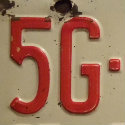
5G has already shown it can reverse declining mobile ARPUs and in Asia over the next five years will lift total revenue and account for a third of all connections, according to Omdia analyst Ramona Zhao.
But Zhao, research manager for the Omdia APAC service provider team, also cautions that the lack of compelling applications is slowing down 5G adoption.
Speaking to the Light Reading Next-Gen Broadband APAC conference on Thursday, she said China and South Korea were the world's only markets where 5G accounted for more than 10% of total subscribers.
She said this would likely change over the next five years as markets such as Taiwan and Hong Kong were expected to catch up.
The research firm has forecast that by the end of 2025, approximately one-third of all APAC connections, including IoT, will be 5G.
Over that period, it expects 5G to drive mobile revenue growth, with India experiencing the biggest increase at a compound annual growth rate of 5%.
Zhao said 5G has already improved the financial performance of South Korean operators, who were the world's first to debut 5G in April 2019.
5G has stabilized their ARPUs, which had previously been in long-term decline. Each of the three operators had increased mobile service revenue in 2020, which they had attributed to 5G subscriber growth, Zhao said.
She said an Omdia survey of Asian consumers last year had found 85% expected it would deliver much faster data speeds, while nearly half believed it would mean new and better mobile apps.
This demonstrated speed and apps were important factors in driving 5G subscriptions, but it also indicated that "the lack of compelling applications remains an inhibitor to 5G adoption."
Want to know more about 5G? Check out our dedicated 5G content channel here on Light Reading.
She said the pandemic had had a mixed effect on 5G take-up. It had accelerated digital services and some app development but had also hindered some rollouts and had lowered consumers' willingness to the spending willingness of consumers to spend.
Harvey Wright, head of 5G for Optus, said he believed the pandemic had been in some ways positive for operators because it had "focused people's attention on how critical connectivity is."
But he said he had seen no sign of slowdown in demand for devices. Optus had experienced higher take-up for services such as remote medicine, while many home broadband customers had chosen to upgrade their connections with 5G fixed wireless.
Adeline Phua, an Omdia principal analyst, predicted that AR/VR-based gaming apps might be the early killer apps for 5G.
But she said she was also excited "about what enterprises can do in developing new use cases and seeing how they can use edge computing."
Jeong Hyeong Lee, a deputy director from South Korea's KT, said the operator was running 5G services for 360 companies, with use cases including a smart factory robots that can carry out spot welding and material handling, intelligent video surveillance, and an AI-based energy solution that could cut electricity consumption by up to 30%.
— Robert Clark, contributing editor, special to Light Reading
Read more about:
AsiaAbout the Author(s)
You May Also Like


.jpeg?width=300&auto=webp&quality=80&disable=upscale)








